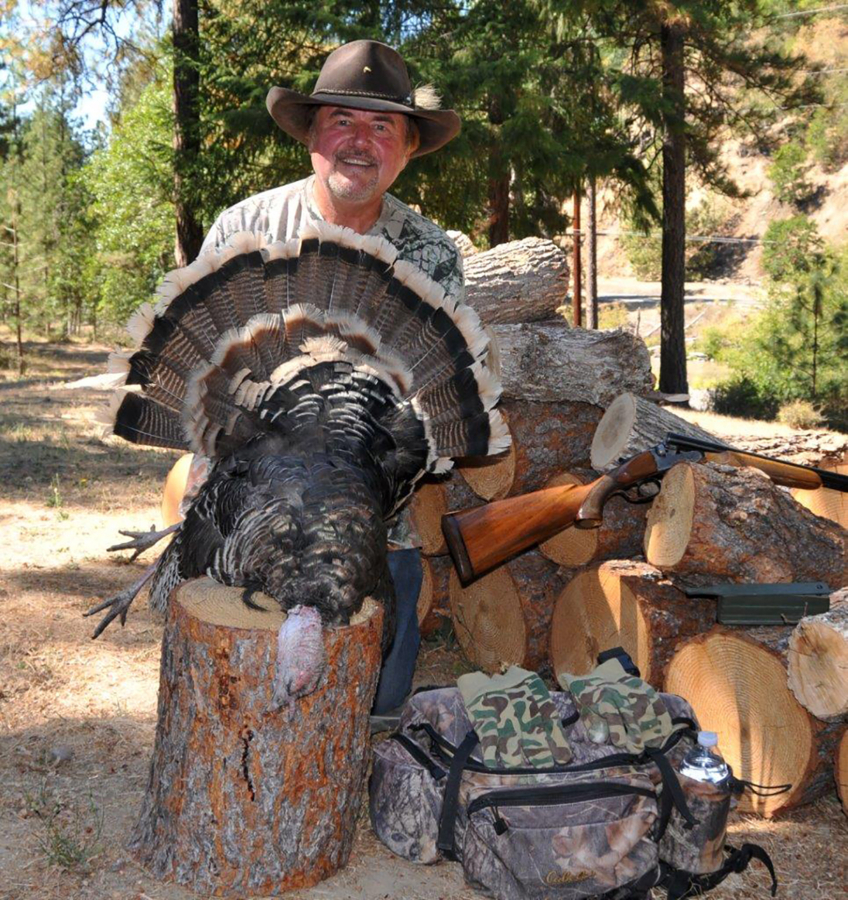Straining to see through the oak woods, I scanned the forest floor, and checked my watch. It was 10:15, and I now knew the birds had gone out the other way.
This flock of wild turkeys tended to move like clockwork about 10 in the morning, leaving the relative safety of the private lands and homesteads to forage in the adjoining Forest Service lands. There were two different routes they took to do this, and if a hunter chose the wrong one, they slipped by.
Fall turkeys will not come to a call, but they will answer one. It can be a good way to locate the flocks, so I gave a few hen yelps on my call, and the flock answered back from behind me. I would have to change tactics and try to slip up on them.
I was not worried about bagging a bird quickly. This is the first time the fall turkey season in the Columbia River Gorge is being held from September 1 through December 31, four months in all, after a string of years with a two-week hunt.
Stefanie Bergh, Wildlife Biologist for the WDFW District 9, said that the reason for the extension of the season was because the birds are doing just fine in the Gorge.
In fact, maybe a little too good.
“We keep getting more and more reports of turkeys from places where we haven’t seen them before,” said Bergh, “like Beacon Rock State Park. They are definitely able to expand their range. Part of that is climate change, and they are able to live in places where people live. They often feed (the turkeys) as well.
“We also get complaints from people that they are damaging their gardens, their flowers, and they poop on their deck.”
Given the strong numbers, the department decided to expand the season.
“We always like to offer more opportunities when appropriate,” she said.
While the flock is expanding, its core is the Klickitat River drainage, and in that core is the Klickitat Wildlife Area, where the manager, Susan Van Leuven, sees flocks of wild turkeys when she drives around while working.
“There are quite a lot of turkeys here,” said Van Leuven. “I have to slow down when I am driving and wait while they cross the road in front of me. The turkey population is pretty strong. Each year we see more turkeys.”
“I think the turkey population can support this kind of hunt,” she added.
The short season in years past did not overlap with the rifle deer season, and Van Leuven speculated that there will be deer hunters that pick up a tag, and if they get a chance at the birds, they may take one.
It is illegal to shoot turkeys with a rifle, however, so hunters will need to keep a shotgun handy in deer camp if they want to harvest a bonus turkey. In the fall hunters can take either sex, too. In the spring only the males, or toms as they are called, are legal.
The flock in the Gorge are of the Merriam’s subspecies of wild turkey, handsome birds with bright, almost white bands in the tail fan of the toms.
Van Leuven reports that the wildlife area’s Soda Springs Unit has thousands of acres of prime turkey habitat, consisting of oak woods, or a mix of pine and oak. However, she suggested that hunters looking for a bird this fall should expect to spend some time scouting. The birds are concentrated in large flocks this time of year, and hunters must find the areas those flocks are using.
Since the birds rarely come to the call in the fall, hunters must use other tactics, such as patterning the birds and ambushing them during their daily travels. Another tactic used is to scatter a flock, and then wait for the birds to regather and hope for a shot.
Fall turkeys are much less alert than spring birds, when the woods are full of calling hunters. During the fall they often don’t seem to realize they can be hunted. This lack of caution would benefit me during my morning’s hunt.
I headed cautiously through the oaks toward where I had heard the birds calling. Coming over a rise along the edge of a creek, I surprised a hen turkey that flew into a clump of trees while giving the alarm call. She was within range, but I could not see her for a shot.
Then another hen stepped out into the open in the creek, and looked around, trying to spot whatever had disturbed the other bird. I raised my Remington 870, and filled my tag. Our Thanksgiving turkey would not be a Butterball this year.
The hen held a surprise for me, for when I collected the bird, I found I had taken a bearded hen. It is the toms that sport the hairy growth on the chest that is considered the beard, but some hens grow beards, too. It is rare, and I had never even seen a bearded hen before.
With the longer season, local hunters have plenty of time left to take a wild turkey this year. With a little luck they could end up with a wild bird for a holiday meal this year.
Terry Otto’s fishing update and forecast can be found as part of “The Guides Forecast” at www.theguidesforecast.com



